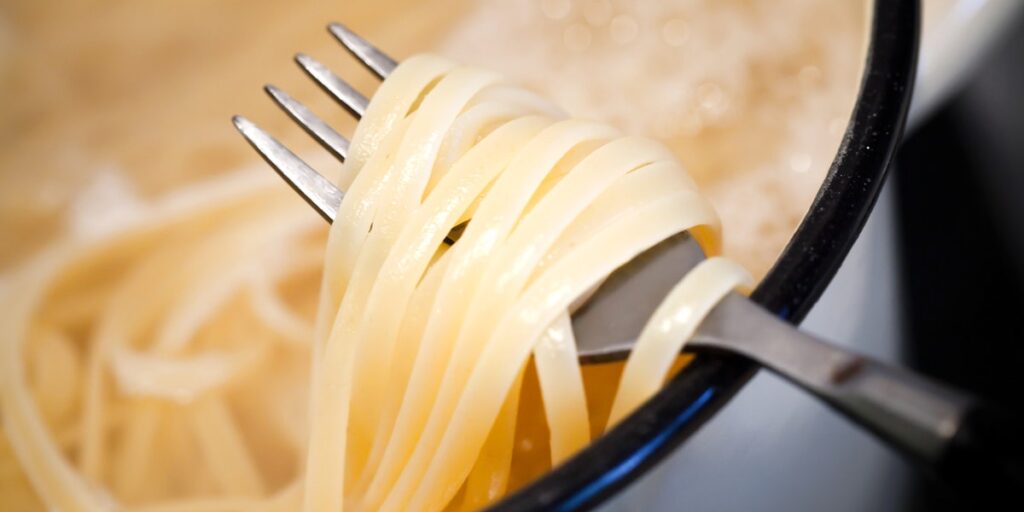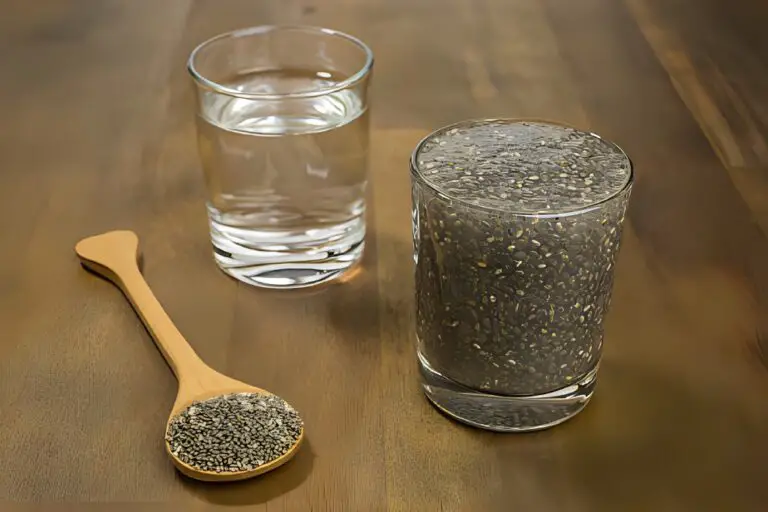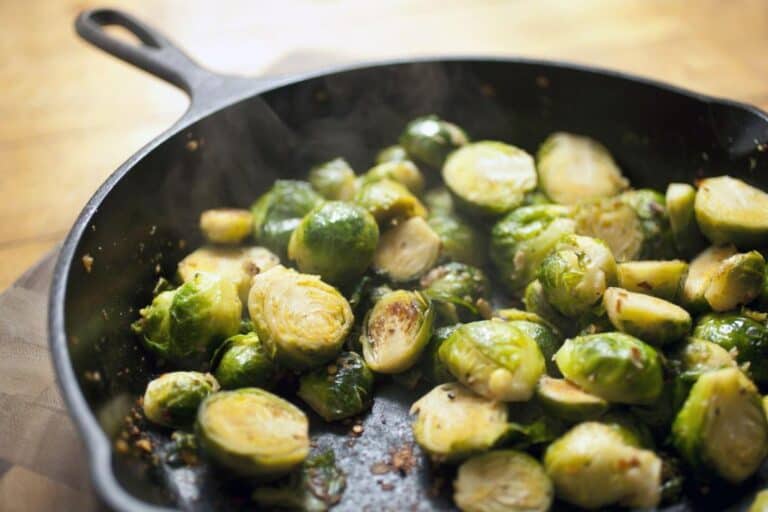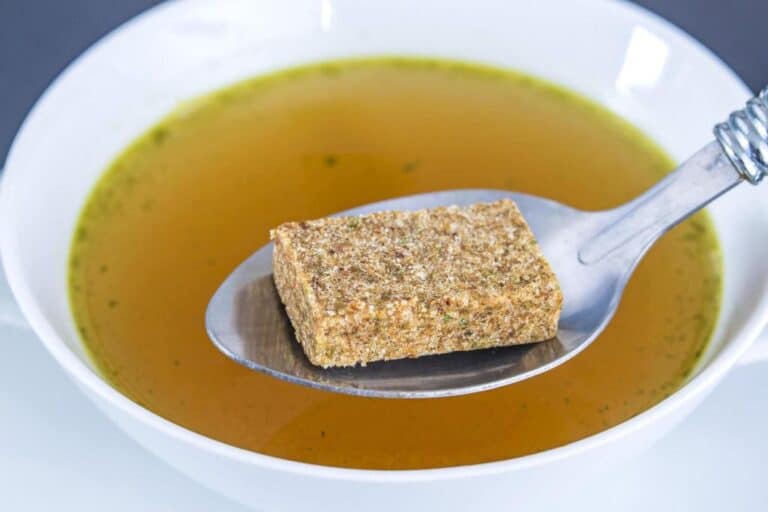Is Eating Pasta Every Day Bad or Good for You?

Pasta is a popular food choice for many people. It is versatile, affordable, and easy to cook. But can you eat pasta every day and still maintain a healthy diet?
Pasta is rich in carbohydrates, which, when consumed in large quantities, can be bad for one’s health. Additionally, it includes gluten, a kind of protein that can create health problems for people who are sensitive to gluten.
On the other hand, pasta may be a source of some nutrients that are essential to one’s health. Some people may enjoy eating pasta occasionally. But for some pasta-lovers over there, they may eat more pasta than they should.
So, in this article, I examine some interesting facts about whether eating pasta every day is bad or good for your health. Some interesting facts about why pasta is bad or good for you.
Can You Eat Pasta Every Day?

Pasta is a favorite food for many, and there’s no need to give it up just because you’re trying to eat healthier. In fact, as long as you’re reaching for whole-grain pasta and not the refined kind, you can have pasta every day if you like!
Some people believe that you can’t eat pasta every day and still maintain a healthy diet, but this isn’t necessarily true. While it’s important to vary your food choices, there’s nothing wrong with enjoying a good plate of pasta sometimes. While eating pasta in the right portions is not directly linked to weight gain, this food tends to be overeating.
In fact, pasta is a great source of carbohydrates, which are essential for providing energy to your body. Plus, it’s a filling food that can help you stay satisfied throughout the day.
It’s important to keep in mind that not all types of pasta are created equal. Some varieties are high in unhealthy fats and sodium, so it’s important to choose wisely.
In addition to a diabetes risk, having too many refined carbs like white pasta can raise your risk of heart disease as well. As long as you’re reaching for whole grain pasta—and not the refined kind—on your supermarket shelf, a daily dish of pasta may help lower your risk of heart disease.
Whole grain pasta is a healthier option than refined pasta, and it also contains more nutrients. It’s a healthy choice, whether you’re eating it as part of a balanced meal or on its own.
| Related: Best Pasta to Eat on a Diet for Weight Watchers to Lose Weight |
Is Eating Pasta Once a Week OK?
There isn’t necessarily anything wrong with eating pasta every day or once a week, but it may not be the healthiest choice. Pasta is high in carbohydrates and can be high in sodium, both of which can contribute to weight gain and high blood pressure if eaten in large quantities.
According to the results of a recent study, the optimal amount of pasta consumption for optimal health is three servings per week. Each serving consists of the proper amount of pasta for the appropriate portion size.
The study, which was published in the journal Nutrients, looked at the diets of more than 23,000 people from eight different countries. It found that those who ate pasta three times a week were no more likely to gain weight or experience health problems than those who ate it less often.
In fact, the study showed that those who ate pasta were actually more likely to have a lower body mass index (BMI) and better blood sugar control than those who didn’t eat it at all.
Eating Pasta Every Day Will Energize You
The majority of people believe that eating a meal high in carbohydrates will make them feel sleepy. Yet the opposite is true. If you eat pasta for supper in a portion size that is suitable as part of a balanced diet, you will be ready to take on the day when you wake up the next morning.
In an interview with Insider, registered dietitian Blake Avery said, “So many people hate carbs, although carbohydrates are our body’s primary energy source.” Complex carbohydrates, as opposed to simple sugars, take longer to digest and provide continuous energy over a longer period of time. This is in contrast to simple sugars, which cause an energy spike and a crash.
Pasta contains complex carbohydrates. One serving of cooked spaghetti contains around 43 grams of carbohydrates. This serving of cooked spaghetti would provide approximately 14% of the recommended daily intake of carbohydrates, based on a 2,000-calorie diet.
Consuming pasta frequently may lead to a lack of variety in the diet, causing a potential deficiency in key nutrients. Take note of the negative effects of eating too much pasta. If you notice that some negative effect happens to your body, like weight gain or high blood pressure, please reduce your daily consumption.
The Right or Wrong Time for Eating Pasta
There is no wrong time to eat pasta, but there are certain times that it might be more beneficial.
For example, if you are looking to boost your energy levels, eating pasta early in the day might be a good idea. Pasta is a complex carbohydrate, which means that it takes a while for your body to break it down and use it as energy. This is why eating pasta early in the day can help you power through your day.
If you are looking to lose weight or maintain your current weight, eating pasta later in the day might be a better option. Pasta is high in carbohydrates, but it is also low in fat and calories. This means that you can enjoy a big bowl of pasta without feeling guilty. Plus, the carbohydrates will help keep your energy levels up so you don’t get tired later in the day.
Is Brown Pasta Better Than White?
A study out of the University of California, Davis, suggests that there may be some truth to the old adage that brown is better. The study found that when participants ate a meal of white pasta compared with a meal of whole-wheat pasta (brown pasta), their blood sugar levels were not as high after eating the white pasta.
The researchers believe this is because white pasta is easy to digest and more quickly absorbed into the bloodstream than its whole-wheat counterpart, causing a more rapid rise in blood sugar levels. The authors of the study suggest that people who are interested in maintaining healthy blood sugar levels should choose whole-wheat pasta over white pasta.
Is Pasta Good for Weight Loss?
A recent study suggests that this might be a good idea; eating moderate amounts of pasta as part of a balanced diet seems to be linked with weight loss. The study’s authors say that pasta can help people feel full and satisfied after eating, which can help them eat less overall.
The study involved nearly 5,000 adults aged 50 or older who were part of a larger study looking at the effects of eating patterns on health. The participants were randomly assigned to eat pasta once a week or not.
After three years, those eating the pasta with the highest calorie content lost weight, as did those who ate more pasta than usual. But those who ate the most pasta lost no weight.
“This study is an important reminder that many people, including those in older age groups, may not need to count pasta as part of their daily calorie intake,” said study author Dr. Dariush Mozaffarian. “When making healthy eating choices, it’s important to look at the whole picture and not just the calories.”
So, according to the findings of this study, having pasta in your diet on a regular basis may help you lose a modest amount of weight. This is because pasta is considered part of a low glycemic index balanced diet.
However, if your goal is to lose weight, you shouldn’t give yourself a chance to consume mounds of pasta, particularly if you cover it with sauces that are high in calories.
Eating Pasta and Your Heart Healthy
When most people think about heart-healthy foods, they don’t typically think of pasta. However, pasta can be a healthy part of a balanced diet when eaten in moderation. In fact, pasta noodles are the heart of the entire dish, not the sauce.
Eating pasta can be part of a heart-healthy diet. The American Heart Association recommends eating foods that are low in saturated fat and cholesterol and high in fiber. Pasta meets these criteria. It is also a low-glycemic food, which means it does not cause a spike in blood sugar levels. This makes it a good choice for people with diabetes or prediabetes.
There are many types of pasta available, and all of them can be healthy choices as long as they’re made with whole-grain flour and cooked al dente. Adding vegetables or lean protein to your pasta dish can also help make it more nutritious.
Pasta and Your Blood Sugar
Pasta, a favorite food for many, is often considered to be high in carbohydrates and, as a result, not the best choice for people with diabetes. But does this reputation hold water? The answer might surprise you.
Yes, pasta has the ability to raise blood sugar levels, so people with diabetes need to be cautious when eating it. In general, pasta should only be eaten in moderation by people with diabetes.
First of all, not all pastas are created equal. Certain types of pasta—like whole-wheat or bean pasta—are actually low in carbs and relatively good for blood sugar control. In addition, portion size is key. Eating too much pasta can certainly cause blood sugar spikes, but eating a modest amount (1-2 cups) is unlikely to have much of an impact.
So if you’re looking for a healthy and satisfying meal option that won’t send your blood sugar levels through the roof, reach for some delicious pasta!
Healthier Alternatives for Pasta

It’s important to make sure you’re choosing healthy toppings and sauces to go with your pasta. Opt for homemade sauces made with vegetables or lean meats instead. of high-fat Alfredo sauces. Be sure to include plenty of fruits and vegetables in your overall diet to get the nutrients you need.
There are some healthier alternatives to pasta that can be enjoyed instead, such as quinoa or brown rice. Quinoa and brown rice are both great alternatives to traditional pasta because they are whole grains that are packed with nutrients. Quinoa is a complete protein and is high in fiber, iron, and magnesium, while brown rice is also high in fiber and provides a good source of B vitamins and minerals.
Other alternatives to pasta include spiralized vegetables such as zucchini, sweet potato, or butternut squash, which can be used to make “zoodles” or spiralized vegetable noodles. These options are low in calories and carbohydrates and are a great way to incorporate more veggies into your diet.
Another option is bean-based pasta, such as chickpea or lentil pasta, which are higher in protein and fiber compared to traditional pasta. These options are also gluten-free, making them a great choice for those with dietary restrictions.
Overall, there are plenty of healthier alternatives to pasta that can be delicious and satisfying. Experimenting with these options can help add variety to your meals and provide a nutritional boost to your diet.
Conclusion
Many people all over the world enjoy pasta as a food. It is a grain-based dish that can be made with different types of flour and can be served with a variety of sauces. Some people believe that eating pasta once a week is not healthy, but a recent study has shown that this may not be the case.
There are many different types of pasta, including spaghetti, macaroni, fettuccine, and lasagna. Pasta is a good source of carbohydrates and fiber. It also contains thiamin, niacin, vitamin B6, and iron.
Pasta may be a healthy component of a diet if it is consumed in moderation. Because it is lower in calories and carbohydrates but higher in fiber and minerals, pasta made from whole grains may be a superior option for many people. Nevertheless, in addition to the sort of pasta that you select, the toppings that you choose for it are of equal importance.






